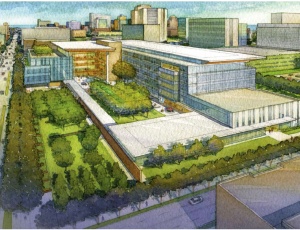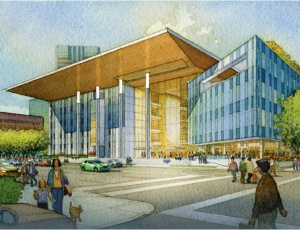The agreement that will lead to replacement of the dilapidated Long Beach Courthouse has been signed between the private company selected for the project, Long Beach Judicial Partners (LBJP), and the Administrative Office of the Courts (AOC).



The AOC says that LBJP will finance, design, build, operate and maintain the new courthouse. The project company has reached financial close and expects to begin construction in early 2011, and the new building is scheduled to be completed and ready for occupancy by fall 2013.
The Long Beach project is the first for which the AOC is using the innovative delivery method called �performance-based infrastructure� (PBI), which will leverage the private sector�s access to financing, technological expertise, management efficiency and entrepreneurial spirit to quickly provide a high-quality facility that will serve the Superior Court of Los Angeles County�s needs and enhance the public�s access to justice.
Completed in 1959, the current Long Beach Courthouse suffers from functional and security flaws, is undersized and dilapidated, and has accessibility issues.
Long Beach Judicial Partners is led by Meridiam Infrastructure, a long-term equity fund focused on infrastructure. Other members of the consortium include AECOM, architects; Clark Construction Group, LLC, construction management; Edgemoor Real Estate Services, commercial real estate services; and Johnson Controls Inc., facilities management, operation and maintenance.
The AOC and LBJP have signed a 35-year services agreement to execute the project. LBJP will finalize design details and quickly proceed into construction. After the court occupies the building in 2013, LBJP will operate and maintain the facility. The state will pay an annual service fee that is �performance-based,� meaning the state will take deductions if court space or functionality falls below agreed specifications. Funding for the annual service contract payment will be subject to annual appropriation. The agreement is not a lease buy-back, as the state owns the land and the building throughout the agreement and at the end of 35 years will continue to retain title. This arrangement gives the project company incentive to design and construct a building that will be reliable and efficient to maintain for the long term.
The AOC says the annual payments cover capital costs as well as operations and maintenance costs. The 35-year duration was selected because it covers the full life cycle of capital repair replacement of major building elements. For this transaction, the AOC retained Ernst & Young Advisory, Inc. as financial advisor and Hawkins, Delafield, Wood, LLP as outside legal counsel.
The project company is providing approximately $49 million of the project�s total funding requirement of approximately $490 million. The remainder is secured through loans from a consortium of six banks.
The state�s value-for-money analysis indicates that the value of this project will equal the value of a comparable state-financed courthouse. Because of the project�s structure, it includes valuable elements that ordinarily cannot be included in new state-constructed courthouses, such as expansion space and county space. The PBI structure makes the project company financially accountable for building performance and instills the discipline for adequate funding of maintenance and capital renewals throughout the term of the agreement.
Clark Construction will soon begin an outreach program for local subcontractors and suppliers.
The site, six acres northwest of the existing courthouse, bounded by West Broadway, Maine Avenue, West Third Street, and Magnolia Avenue, was formerly owned by the Long Beach Redevelopment Agency. The city worked closely with the AOC to develop and execute a property exchange agreement in which the city provided the site for the new building plus a financial contribution to the project in exchange for title to the existing Long Beach Courthouse property, which will be vacated when the new courthouse is complete.
The building will house 31 courtrooms, with the court occupying roughly 80% of the overall space, which totals 531,000 sq ft. The additional space will be used for offices of county justice agencies and for commercial office and retail space compatible with court uses. The project also includes renovation of the nearby existing parking structure, expanding its capacity to more than 900 spaces.

Post a comment to this article
Report Abusive Comment